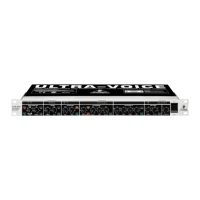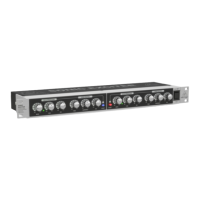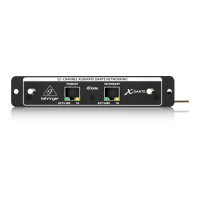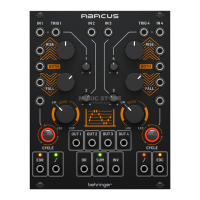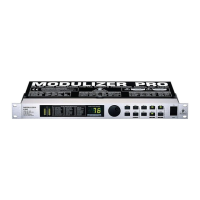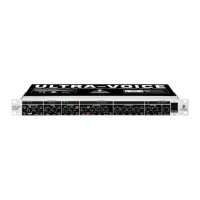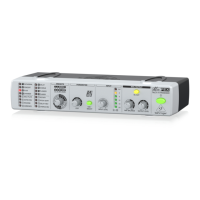23
E
absolute silence.
0
20
40
60
80
100
120
140
160
Threshold Of Audibility
Falling Leaves
Recording Studio
Quiet Apartment
Normal Conversation
"Loud" Office
Power Drill
Threshold Of Pain
Jet Engine
Machinery Hall
Sound-Pressure Level (dB SPL)
Fig. 4.1: Dynamic range of human hearing
The range of sound pressure levels or the dynamic range of human hearing encompasses a factor of 10,000,000.
This enormous range of values is difficult to handle and additionally does not represent the subjective percep-
tion of sound, since human hearing tends to use a logarithmic curve. When an increase in loudness by the
factor two is perceived as one step, four times the loudness level equals two steps. So, the decibel is a unit of
measurement that describes a level in relation to a reference quantity. To make clear which reference quantity
is meant, the abbreviation SPL (sound pressure level) is sometimes used together withdB. Starting with a
value of 0dB SPL (= 2*10
-5
Pa) for the threshold of audibility, anydB values can be calculated by means of the
following formula:
L
p
p
=⋅
20
2
1
log
L = e.g. the absolute sound pressure level indB SPL
p
1
= e.g. a reference sound pressure of 0.00002 Pa
p
2
= the sound pressure (in Pa) produced by the sound source to be calculated
log = decimal logarithm.
As can be seen, human hearing has a very wide dynamic range of about 130dB, which surpasses the range
of a DAT or CD player with an approximate range of 96dB. From a physical point of view, a 3dB boost
corresponds to an increase in power by the factor 2. However, the human ear perceives a signal to be twice
as loud as before only if it is boosted by about 10dB.
4.1 Audio dynamics
As demonstrated it is possible to manufacture analog audio equipment with a dynamic range of up to 130dB.
In contrast to analog techniques, the dynamic range of digital equipment is approximately 25dB less. With
conventional record and tape recorder technology, as well as broadcasting, this value is further reduced.
Generally, dynamic restrictions are due to noisy storage in transmission media and also the maximum head-
room of these systems.
4. TECHNICAL BACKGROUND
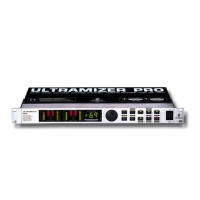
